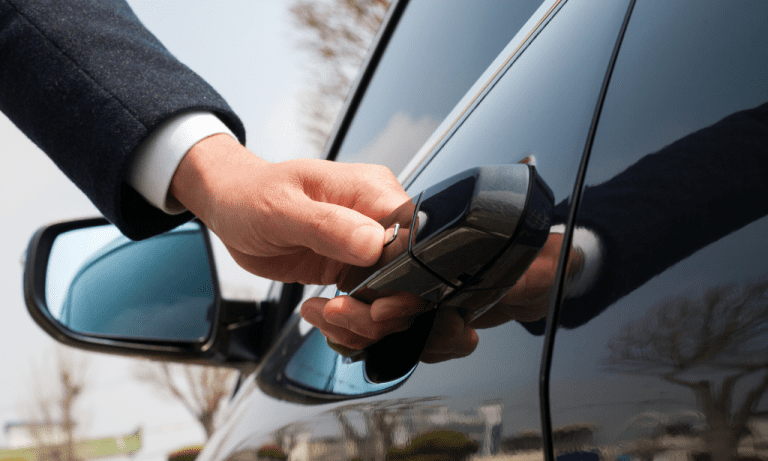How To Easily Remove Oil Paint From Your Car Body: 5 Powerful Tips
To remove oil paint from a car body, you can use a mixture of dish soap and warm water to gently scrub the affected area with a soft cloth. Avoid using harsh chemicals or abrasive materials that may damage the car’s paint job.
Introducing how to remove oil paint from a car body can be frustrating and time-consuming. Whether it’s a result of a clumsy diy art project or an unfortunate accident, oil paint on a car can be a challenging mess to clean.
However, by following a few simple steps and using some readily available household items, you can effectively remove oil paint without causing any damage to your car’s exterior. In this article, we will guide you on how to remove oil paint from your car body easily and safely. Let’s dive in!
Understanding The Damage Oil Paint Can Cause
Oil paint can cause significant damage to your car’s body if left untreated. Understanding the impact of oil paint and the importance of quick removal is crucial in maintaining the appearance and condition of your vehicle. Regular washing may not always be enough to remove oil paint, so it’s essential to take additional steps to ensure your car is free from these stubborn stains.
The Impact Of Oil Paint On Your Car’S Body:
- Oil paint can adhere to the surface of your car’s body, creating unsightly stains that are difficult to remove.
- If left untouched, oil paint can cause long-term damage to the paintwork, leading to discoloration and deterioration of the car’s exterior.
- The chemicals in oil paint can react with the clear coat on your car’s body, resulting in etching or pitting of the paint.
- Exposure to harsh weather conditions can worsen the effects of oil paint, making it even more challenging to remove and causing further damage to your car’s body.
The Importance Of Quick Removal:
- Removing oil paint from your car’s body as soon as possible is essential to prevent further damage and maintain its pristine appearance.
- The longer oil paint remains on the surface, the more it seeps into the paintwork, making it harder to eliminate.
- Quick removal also reduces the risk of staining and potential long-term issues, ensuring the value of your car remains intact.
Why Regular Washing May Not Be Enough:
- While regular car washes are essential for maintaining cleanliness, they may not be sufficient to remove oil paint stains.
- Car wash shampoos and detergents generally do not have the necessary strength to dissolve and lift oil-based paints.
- The stubborn nature of oil paint requires more specific treatments and products specifically designed for their removal.
- Taking immediate action with targeted removal methods will yield better results than relying solely on regular car washes.
By understanding the damage oil paint can cause and the importance of quick removal, you can protect the appearance and value of your car. Regular washing, although necessary, may not always be enough. It’s crucial to be proactive and utilize specialized techniques and products to remove oil paint stains effectively.
Assessing The Severity Of The Oil Paint Stain
Identifying The Extent Of The Paint Damage
One of the first steps to effectively remove oil paint from your car body is to assess the severity of the stain. Understanding the extent of the paint damage will help you determine the best course of action and ensure a successful cleanup process.
Here are some key points to consider:
- Examine the affected area: Carefully inspect the spot where the oil paint has splashed onto your car body. Look for signs of oil paint residue, such as discoloration, texture changes, or a glossy appearance.
- Check for depth: Determine how deeply the oil paint has penetrated into the car’s surface. If the paint has only affected the clear coat, removing it may be relatively straightforward. However, if the paint has reached the base coat or primer, additional steps may be necessary.
- Evaluate the size of the stain: Take note of the size of the oil paint stain. Is it a small, concentrated area or has it spread across a larger surface? This information will help you choose the right cleaning method and products.
- Assess the overall condition of the paint: Consider the state of the paint surrounding the stain. If the paint is already flaking or peeling in other areas, removing the oil paint may cause further damage. In such cases, it might be best to seek professional help.
- Take note of the paint type: Different car paints have varying levels of resistance to oil-based stains. Whether your car has acrylic, enamel, or urethane-based paint, understanding the type of paint on your car will guide you in selecting the appropriate removal method.
By considering these factors, you can gain a clearer picture of the oil paint stain’s severity and make informed decisions on how to proceed with its removal. Remember, a proper assessment will save you time, effort, and potential damage to your car body.
Using Safe And Effective Cleaning Products
Keeping your car’s paintwork clean and spotless is a key part of maintaining its overall appearance. If you find oil paint stains on your car body, it’s essential to act quickly to prevent any long-term damage. However, it’s crucial to choose the right cleaning products that are safe and effective for removing oil paint without harming the car’s paintwork.
Here are some tips on how to choose, apply, and remove cleaning products to safely eliminate oil paint from your car body:
Choosing The Right Cleaning Products For Your Car:
- Opt for specialized automotive cleaning products designed to remove oil-based stains effectively.
- Look for products that are labeled as safe for use on car body paint.
- Check customer reviews and ratings to ensure the product has a proven track record of effectiveness.
Avoiding Abrasive Products That Can Damage The Paint:
- Stay away from harsh chemicals or abrasive cleaners, as they can strip the paint or leave permanent marks.
- Avoid using household cleaning products or solvents that may contain harmful ingredients.
How To Effectively Apply And Remove The Cleaning Products:
- Start by applying a small amount of the cleaning product onto a clean microfiber cloth.
- Gently rub the stained area in a circular motion, ensuring not to apply excessive pressure.
- Allow the cleaning product to dwell for a few minutes to break down the oil paint.
- Rinse the cloth thoroughly and wipe away the cleaning solution, along with the dissolved oil paint.
- Repeat the process if necessary, applying additional cleaning solution as needed.
Remember, it’s always a good idea to test any cleaning product on a small, inconspicuous area of your car first to ensure compatibility and avoid any unexpected damage. By choosing safe and effective cleaning products, and following the correct application and removal methods, you can effectively remove oil paint stains from your car body and keep it looking as good as new.
Employing Mechanical Methods For Stubborn Stains
Exploring Mechanical Methods For Removing Oil Paint
When it comes to removing stubborn oil paint stains from your car’s body, employing mechanical methods can be highly effective. These techniques involve using specialized tools and equipment to physically lift off the paint, ensuring a smoother finish.
Using clay bars to lift off stubborn paint stains:
- Clay bars are an excellent choice for tackling stubborn oil paint stains on your car’s body.
- These are soft clay compounds that help remove contaminants from the surface of the car without damaging the paint.
- To use a clay bar, begin by lubricating the affected area with a specialized clay lubricant or a mixture of water and car shampoo.
- Gently rub the clay bar back and forth over the stained area, applying light pressure.
- The clay will pick up the paint particles as it glides across the surface.
- Keep kneading the clay bar to expose a fresh, clean surface before moving on to another section.
- Finally, wipe away any residue with a microfiber cloth.
Buffing and polishing techniques for a smooth finish:
- Buffing and polishing techniques can also be effective in removing oil paint stains from your car’s body.
- Start by washing and drying the car thoroughly to remove any loose dirt or debris.
- Use a dual-action or rotary polisher with a suitable polishing compound.
- Apply the compound to a foam or microfiber pad and work in small sections.
- Move the polisher in circular motions while maintaining a consistent pressure.
- As you buff, the paint compound will help break down and remove the oil paint stains from the car’s surface.
- After buffing, wipe away any excess compound with a clean cloth, and inspect the area.
- If needed, repeat the buffing process until the stains are no longer visible.
By exploring these mechanical methods and employing clay bars, buffing, and polishing techniques, you can effectively remove stubborn oil paint stains from your car’s body. These methods not only ensure a clean and pristine surface but also help restore your car’s original shine.
Conclusion
To conclude, removing oil paint from your car body can be a daunting task, but with the right information and techniques, it is a problem that can be easily solved. Begin by gathering the necessary supplies, such as a degreaser, abrasive sponge, and microfiber cloth.
Take your time and approach the process with patience, making sure to test any product or method in a hidden area first. Whether you choose to use a home remedy like dish soap or a specialized car cleaner, always follow the instructions carefully.
Remember to work in small sections and avoid scrubbing too vigorously to prevent damaging the car’s paint. After removing the oil paint, finish off by washing and waxing your car to restore its shine and protect its surface. By following these steps, your car will be oil paint-free and looking as good as new in no time.
- How To Expertly Attach Patches To Headliner: Master the Process - October 3, 2023
- Can You Safely Clear Coat Your Polished Aluminum for Ultimate Shine? - October 3, 2023
- Will A Raptor Grill Fit An F150? Unveiling the Perfect Customization Option - October 3, 2023


![Jeep Wrangler Passenger Seat Problems [Expert Solutions]](https://autoguruz.com/wp-content/uploads/2023/07/Jeep-Wrangler-Passenger-Seat-Problems-Expert-Solutions-768x461.png)